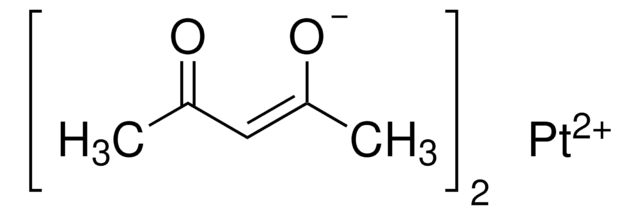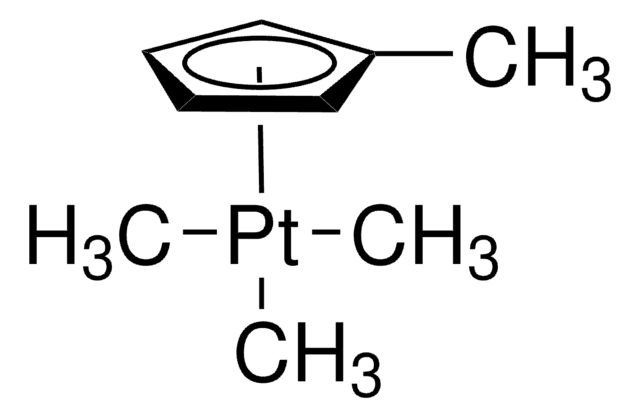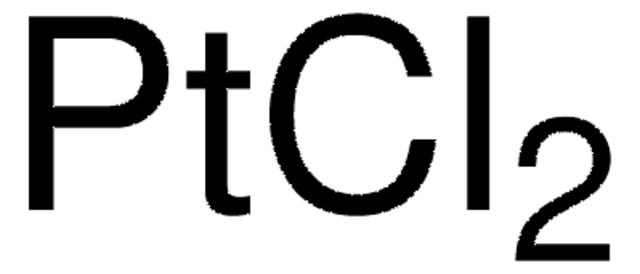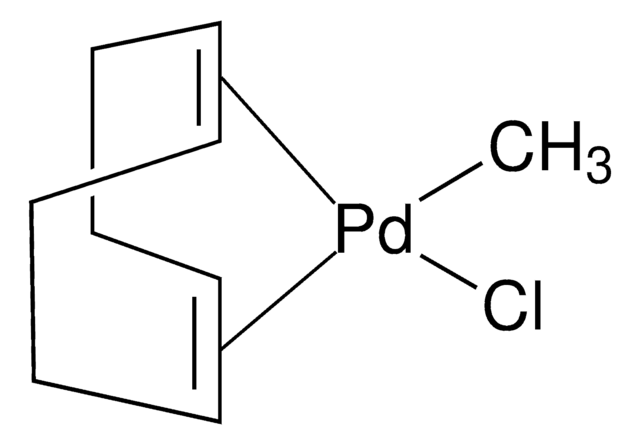282782
Platinum(II) acetylacetonate
97%
Sinônimo(s):
2,4-Pentanedione platinum(II) derivative, Pt(acac)2
About This Item
Produtos recomendados
Ensaio
97%
Formulário
solid
adequação da reação
core: platinum
reagent type: catalyst
pf
249-252 °C (lit.)
cadeia de caracteres SMILES
CC(=O)\C=C(\C)O[Pt]O\C(C)=C/C(C)=O
InChI
1S/2C5H8O2.Pt/c2*1-4(6)3-5(2)7;/h2*3,6H,1-2H3;/q;;+2/p-2/b2*4-3-;
chave InChI
KLFRPGNCEJNEKU-FDGPNNRMSA-L
Procurando produtos similares? Visita Guia de comparação de produtos
Descrição geral
Aplicação
- In the preparation of N-allylanilines by the direct use of allylic alcohols. Anilines with electron-donating groups give good yields.
- For selective N-allylation of 2,3-disubstituted indoles in water.
It can be used as a starting material in the preparation of platinum-lead nanoparticles supported on carbon. The PtPb/C catalyst exhibits enhanced electrochemical activity towards methanol and formic acid oxidation.
Palavra indicadora
Warning
Frases de perigo
Declarações de precaução
Classificações de perigo
Acute Tox. 4 Dermal - Acute Tox. 4 Inhalation - Acute Tox. 4 Oral - Eye Irrit. 2 - Repr. 2 - Skin Irrit. 2 - STOT SE 3
Órgãos-alvo
Respiratory system
Código de classe de armazenamento
11 - Combustible Solids
Classe de risco de água (WGK)
WGK 3
Ponto de fulgor (°F)
Not applicable
Ponto de fulgor (°C)
Not applicable
Equipamento de proteção individual
Eyeshields, Gloves, type P3 (EN 143) respirator cartridges
Escolha uma das versões mais recentes:
Já possui este produto?
Encontre a documentação dos produtos que você adquiriu recentemente na biblioteca de documentos.
Os clientes também visualizaram
Artigos
Magnetism and magnetic materials have been of scientific interest for over 1,000 years. More recently, fundamental investigations have focused on exploring the various types of magnetic materials and understanding the magnetic effects created by electric currents.
Nossa equipe de cientistas tem experiência em todas as áreas de pesquisa, incluindo Life Sciences, ciência de materiais, síntese química, cromatografia, química analítica e muitas outras.
Entre em contato com a assistência técnica














